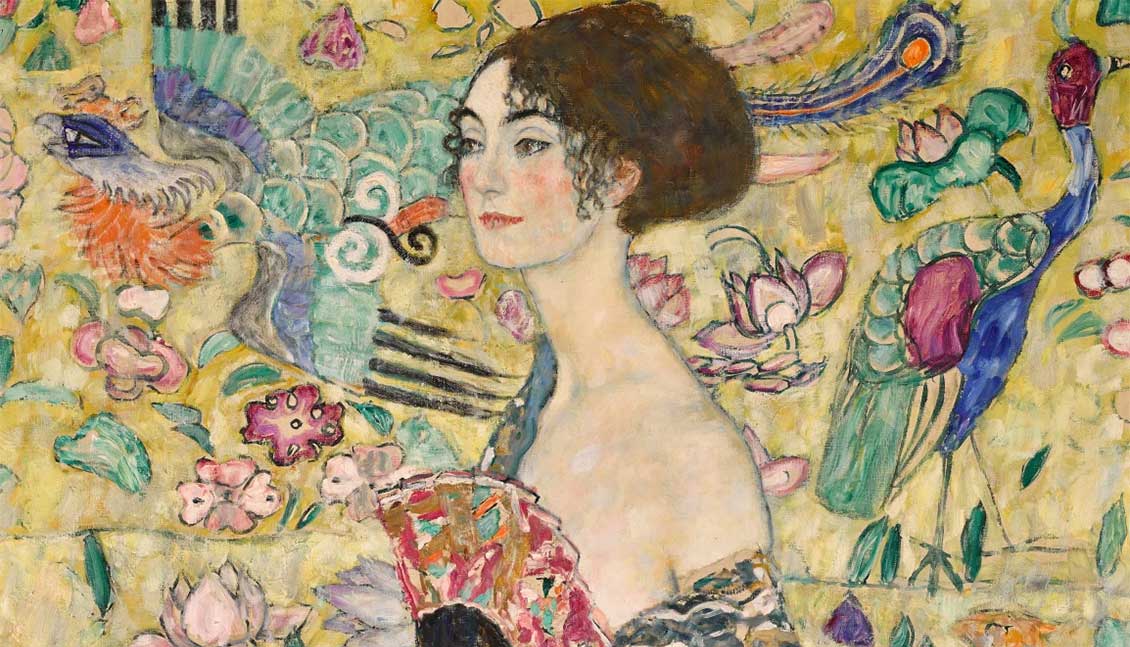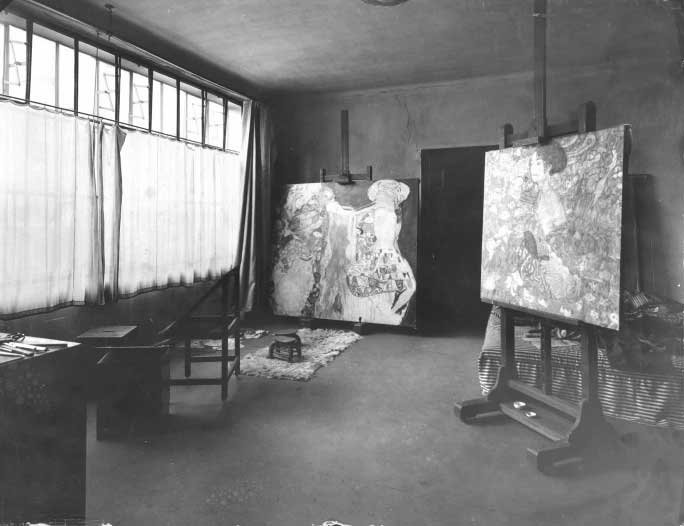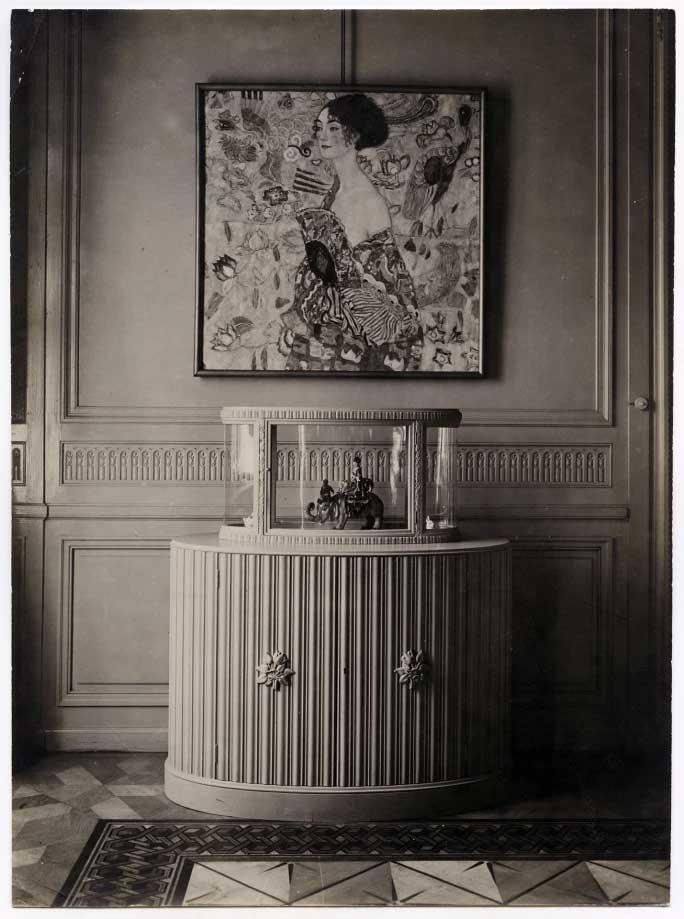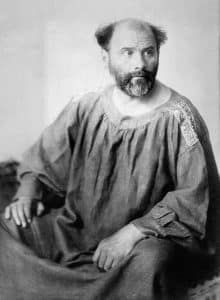
Sotheby’s reveals a work that is not only the star of the summer auction season in London, but also one of the finest and most valuable works of art ever to be offered at auction in Europe.
1918 was the year the curtain came down on Vienna’s “Golden Age” with the loss of its most gilded of talents, Gustav Klimt. Following his untimely death, aged 55, friends of the artist entered his studio at Feldmühlgasse 11 in Vienna’s suburbs and made a startling discovery. Still on its easel sat a beguiling portrait of an unknown woman: Dame mit Fächer (Lady with Fan), 1917-18, his last great portrait of a woman, a masterpiece that acts as a feminine requiem for a departing era. More than a century on, Dame mit Fächer arrives at Sotheby’s in London.
Captivating in its background of Oriental motifs, its palette of turquoise, yellow, pink, purple and orange and the confident beauty of its anonymous sitter, the work’s allure hasn’t dimmed: more than a century after it was painted it continues to charm and intrigue.
For any artist, there are two kinds of final work. There are valedictory thoughts of winter completed in old age. And then there are the accidental end games, works created while the artist is at the height of their powers. Dame mit Fächer is glorious evidence of this phenomenon. Having gained fame, notoriety and wealth a decade earlier, with dazzling gold leaf works such as The Kiss, Judith I and Portrait of Adele Bloch-Bauer I, by the close of 1917 the painter was experimenting new modes and motifs (although his fascination with beautiful women remained a constant).

In Dame mit Fächer we discover Klimt’s passion for East-Asian culture. The artist had long been enamoured by Japanese painting and printmaking, but subsequently he also explored the rich visual traditions of Chinese, Korean and Persian art. Additionally, his companion and muse, the fashion designer Emilie Flöge, shared her interest in the stencil techniques of oriental textiles. Egon Schiele noted that Klimt’s home was decorated with Japanese prints while a “huge wardrobe” housed his “marvellous collection of Chinese and Japanese robes.” Gold had given way to the decorative flora and fauna of the East.
The figure of the lady – with her hint of a smile and distant gaze, her kimono daringly, precipitously, adrift – is situated at the centre of a whirl of East-Asian patterns and motifs: a golden pheasant, a crane, lotus flowers in bloom and, most significantly, a Chinese phoenix – fenghuang – in full flight. As with the background colour of yellow, all are emblematic of good fortune.
The identity of the sitter with the fan remains a mystery, although there have been suggestions that it is Johanna Staude, a friend of Klimt who modelled both for him and Schiele. The enigma feels appropriate to the artist’s treatment of his subjects. Even when painting commissions of Vienna’s elite – his sitters are not entirely the point of his portraits. Klimt didn’t simply paint stylish women, he immersed them in style, like a bather in water. In earlier works he lost them in waves of gold; here he envelopes his fanning muse in a sea of Chinoiserie.
And it isn’t just the backdrop that is progressive. “As society changed, with more radical elements encouraging equality among the sexes – and even discussion of female desire – representation of women centred on a paradox in which women could only be saint or sinner,” notes Thomas Boyd-Bowman, senior director in Sotheby’s Impressionist & Modern Art department. “Klimt’s art – modern both in form and sensibility – eschewed such dichotomies.” Indeed, Klimt’s women are often – simultaneously – both soft and direct, erotic and vulnerable, elegant and animal. In Dame mit Fächer he pictures an alluring figure – revealing just a little too much shoulder, the fan – playfully, tentatively – covers her breast. Klimt has turned a Viennese lady into a geisha (of sorts).

With Klimt’s death, his studio at a summer house in the 13th district of Vienna, was emptied. Egon Schiele and Emilie Flöge tried to save the studio but within a few years the site had been redeveloped, turning the modest Biedermeier building into a villa. Dame mit Fächer went into the collection of industrialist Erwin Böhler, who showed it at the Vienna Kunchau exhibition of 1920. It later passed through the Rudolf Leopold Collection and was acquired by its present owner in the mid 1990s.
In 2021-2022, the work was the focus of a special exhibition at the Upper Belvedere in Vienna, a showcase of Klimt’s last works. Yet, this in essence, is no late endeavour. This mysterious woman in her realm of flowers and birds, her fan diplomatically placed, is a reawakening: like the phoenix swooping behind her, it marks the soaring achievement of a figure revitalised.
POSTED WITH PERMISSION. COPYRIGHT SOTHEBY’S. Click to read original article.


